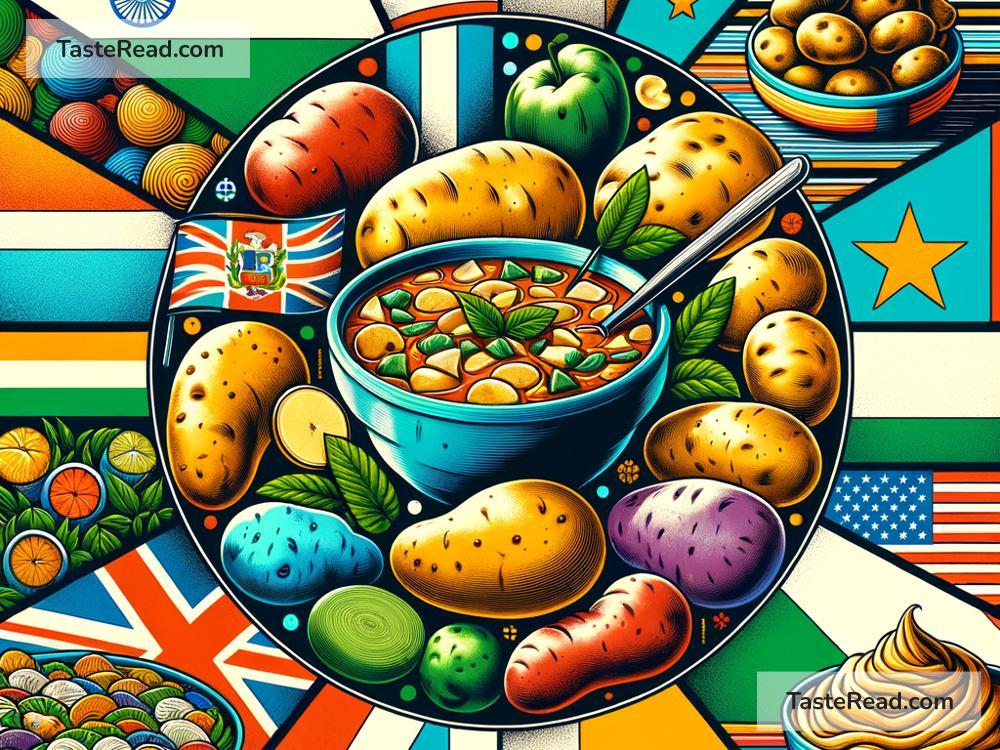The Global Journey of the Potato
The humble potato is one of the world’s most popular and widely grown crops today. Found in kitchens across the globe, it has become a staple food for billions of people. But the story of how the potato traveled from its original home in South America to feed the world is an amazing journey that goes back hundreds of years. Let’s take a closer look at how this simple tuber became a global superstar.
The Potato’s Beginnings in South America
The potato was first grown about 8,000 years ago in the Andes Mountains of South America, in what is now modern-day Peru and Bolivia. Indigenous people, including the Inca civilization, cultivated and ate potatoes long before Europeans ever set foot in the Americas. It was well-adapted to the harsh environment of the mountains — growing at high altitudes and surviving cold temperatures.
For the Inca people, the potato wasn’t just food. It was central to their way of life. They used it in religious ceremonies and even told time based on how long it took for potatoes to cook. The Incas preserved potatoes by freeze-drying them into a form called “chuño,” which could last for years — ideal for times of famine or long journeys.
The potato remained mostly unknown to the rest of the world until the Spanish conquistadors arrived in the Americas in the 1500s. While they were searching for gold and silver, they stumbled upon potatoes instead. Though they may not have known it at the time, that discovery would have a huge impact on history.
The Potato’s Arrival in Europe
In the late 1500s, Spanish explorers brought the potato to Europe. At first, people weren’t sure what to make of it. Some farmers were reluctant to grow potatoes because they thought the weird-looking plant was poisonous or not suitable for humans. After all, it wasn’t like the wheat and barley they were used to. In fact, some people even called potatoes “devil’s apples” because they grew underground.
However, the potato eventually gained acceptance. It had several advantages: it grew well in different types of soil, required less space to cultivate, and produced high yields. Amid periods of food shortages and wars, these qualities made the potato a lifesaver for many communities. By the 18th century, potatoes were being grown throughout Europe, and they became important in feeding a growing population.
One of the biggest supporters of the potato was Antoine-Augustin Parmentier, a French pharmacist. He promoted the potato as nutritious and easy to grow at a time when France was struggling with hunger. Parmentier even hosted famous dinners where all the dishes were made from potatoes to convince people to try them. Thanks to his efforts, potatoes became a popular crop in France and later spread to other parts of Europe.
The Potato’s Role in History
The potato didn’t just influence diets — it shaped history, too. In Ireland, the potato became the main source of food for much of the population in the 18th and 19th centuries. Irish farmers grew a variety known as the “Irish Lumper,” which was easy to grow in large quantities. However, relying so much on just one crop proved to be dangerous.
In the 1840s, a disease called potato blight destroyed almost all of Ireland’s potato crops. For many Irish families, this was a disaster. Starving and unable to pay rent, almost one million people died during what became known as the Great Irish Famine. Another million emigrated to countries like the United States and Canada, spreading Irish culture abroad and changing global migration patterns forever.
Outside of Europe, potatoes also spread to Asia. They were introduced to China in the 1600s, where farmers quickly saw their benefits in providing food for a large and growing population. Today, China is the world’s largest producer of potatoes. In India, the British brought potatoes during the colonial period, and they became a beloved ingredient in dishes like aloo curry and samosas.
The Modern Potato
Today, the potato is grown in more than 150 countries and comes in thousands of varieties. From French fries to mashed potatoes, this versatile ingredient is used in countless recipes and cuisines. It’s also an essential crop for food security, providing more calories per acre than any other staple crop.
Beyond its role in food, potatoes have also made their way into science and pop culture. For example, in 2015, potatoes played a starring role in the movie The Martian, when astronaut Mark Watney grew them to survive on Mars. Scientists are even studying potatoes to see if they can be grown in space or on other planets, showing that the humble spud might have a futuristic role to play!
Conclusion
The potato has come a long way from the Andes Mountains. Its journey has taken it across continents and through centuries, shaping cultures, economies, and even history along the way. Though it started as a simple tuber, it has become one of the most important foods in the world, feeding millions every day.
So the next time you enjoy some potato chips or dig into a bowl of mashed potatoes, take a moment to appreciate the incredible global adventure behind this extraordinary crop. It’s more than just food — it’s a symbol of human history, resilience, and ingenuity.


